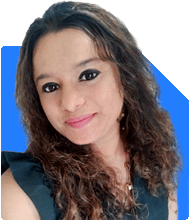Hello sir, I am 28 years old living alone and earning 33 thousand per month and my total expenses are 15000 thousand a month that includes my personal expenses, house maintenance, bills, S.I.P etc. I am roughly able to save 18000 thousand a month. I live in my parents gifted house, have no on going loans, 80,000 is invested in equity market and 1,30,000 is invested in together total 4 equity and 1 hybrid mutual funds with a SIP of 1500 in ICICI value discovery fund. I have a health insurance of 2 Lakh rupees, 3 Lakhs in fixed deposit, 50,000 in postal scheme and 1,50,000 in savings. I wish to building a maximum corpus in next 20 years. Kindly advise on the same
Thank you
Ans: First of all, congratulations on being financially disciplined at the age of 28. Your ability to save a significant portion of your income is commendable. Let’s delve into your financial situation and explore ways to maximise your corpus over the next 20 years.
Current Financial Overview
You are earning Rs 33,000 per month and spending Rs 15,000, allowing you to save Rs 18,000 monthly. You have a diversified portfolio including equity investments, mutual funds, fixed deposits, postal schemes, and savings. Additionally, you have health insurance and live in a debt-free house. These are excellent foundations for building wealth.
Emergency Fund and Insurance Coverage
An emergency fund is crucial. You have Rs 1.5 lakhs in savings and Rs 3 lakhs in fixed deposits, which is a good start. Aim to maintain an emergency fund that covers at least six months of your expenses. This ensures you have a safety net in case of unexpected events.
Health insurance is another critical aspect. You currently have a coverage of Rs 2 lakhs. Considering rising medical costs, it is advisable to enhance your health insurance to at least Rs 5 lakhs. This additional coverage can provide better protection against unforeseen medical expenses.
Investment Portfolio Analysis
Equity Market Investments:
You have Rs 80,000 invested in the equity market. Equity investments can provide significant returns over the long term but come with higher risk. Regularly monitor your investments and ensure they align with your risk tolerance and financial goals.
Mutual Funds:
You have Rs 1,30,000 invested in a mix of four equity mutual funds and one hybrid mutual fund, with a SIP of Rs 1,500 in the ICICI Value Discovery Fund. Diversifying across different types of funds can reduce risk. However, actively managed funds often outperform passive index funds due to professional management and market expertise.
Consider consulting with a Certified Financial Planner to review the performance of your mutual funds and make adjustments if necessary. Regularly rebalancing your portfolio ensures it remains aligned with your financial goals and market conditions.
Fixed Deposits and Postal Schemes:
You have Rs 3 lakhs in fixed deposits and Rs 50,000 in a postal scheme. While these provide safety and assured returns, their growth potential is limited. Given your long-term horizon, you might want to shift a portion of these funds into higher-growth investment options such as equity mutual funds.
Maximising Savings and Investments
Systematic Investment Plan (SIP):
Your current SIP of Rs 1,500 in the ICICI Value Discovery Fund is a good start. SIPs help in averaging the cost of investments and mitigate market volatility. Increasing your SIP amount can significantly enhance your corpus over time. Given your ability to save Rs 18,000 monthly, consider allocating a larger portion to SIPs in various mutual funds.
Benefits of Regular Funds Over Direct Funds:
Direct funds might seem appealing due to lower expense ratios, but they require constant monitoring and expertise. Regular funds, managed by a Certified Financial Planner, provide professional guidance, periodic reviews, and rebalancing of your portfolio. This can lead to better-informed decisions and potentially higher returns.
Diversification and Risk Management
Asset Allocation:
A balanced asset allocation strategy can help manage risk and optimise returns. Consider spreading your investments across different asset classes such as equities, debt, and gold. This diversification can protect your portfolio from market fluctuations.
Review and Rebalance:
Regularly review your investment portfolio to ensure it stays aligned with your goals. Rebalancing involves adjusting the weightage of different asset classes based on their performance and your risk tolerance. This practice helps maintain the desired risk-reward balance.
Retirement Planning
Starting Early:
Starting your retirement planning early gives you a significant advantage due to the power of compounding. With a 20-year investment horizon, even small, regular contributions can grow substantially. Consider investing in a mix of equity and debt mutual funds tailored to your risk profile and retirement goals.
Retirement Corpus Estimation:
Estimate your retirement corpus based on your future financial needs, considering factors like inflation and lifestyle changes. Use retirement planning tools or consult a Certified Financial Planner to determine the amount required and devise a strategy to achieve it.
Tax Planning
Utilising Tax Benefits:
Utilise tax-saving investment options under Section 80C, such as Equity-Linked Savings Schemes (ELSS), Public Provident Fund (PPF), and National Savings Certificate (NSC). These not only help in tax saving but also provide good returns over the long term.
Efficient Tax Management:
Efficient tax planning involves strategically investing in tax-saving instruments and ensuring optimal use of available deductions. Regularly reviewing and adjusting your tax planning strategies can enhance your post-tax returns.
Long-Term Investment Strategies
Compounding Power:
Leverage the power of compounding by staying invested for the long term. Compounding can significantly boost your returns, especially when you reinvest the earnings from your investments. The longer your investment horizon, the more you benefit from compounding.
Avoid Timing the Market:
Market timing is challenging and often leads to suboptimal returns. Focus on a disciplined investment approach rather than trying to predict market movements. Regular investments through SIPs and staying invested through market cycles can yield better results.
Financial Discipline and Monitoring
Staying Committed:
Financial discipline is crucial for achieving your goals. Stick to your savings and investment plan, and avoid unnecessary expenses. Regularly track your progress and make adjustments as needed.
Periodic Reviews:
Conduct periodic reviews of your financial plan to ensure it remains relevant and effective. Life events and market conditions can impact your financial situation, so it’s essential to adapt your plan accordingly.
Final Insights
Building a significant corpus over the next 20 years requires a disciplined approach, strategic planning, and regular monitoring. Your current financial habits are commendable, and with some adjustments, you can further enhance your investment portfolio.
Consider increasing your SIP contributions, diversifying your investments, and enhancing your health insurance coverage. Regularly review and rebalance your portfolio to stay aligned with your goals. Efficient tax planning and leveraging the power of compounding will also play a crucial role in achieving your financial objectives.
Consulting with a Certified Financial Planner can provide professional guidance and help optimise your investment strategy. Stay committed to your financial plan, and you’ll be well on your way to building a substantial corpus for your future.
Best Regards,
K. Ramalingam, MBA, CFP,
Chief Financial Planner,
www.holisticinvestment.in





















